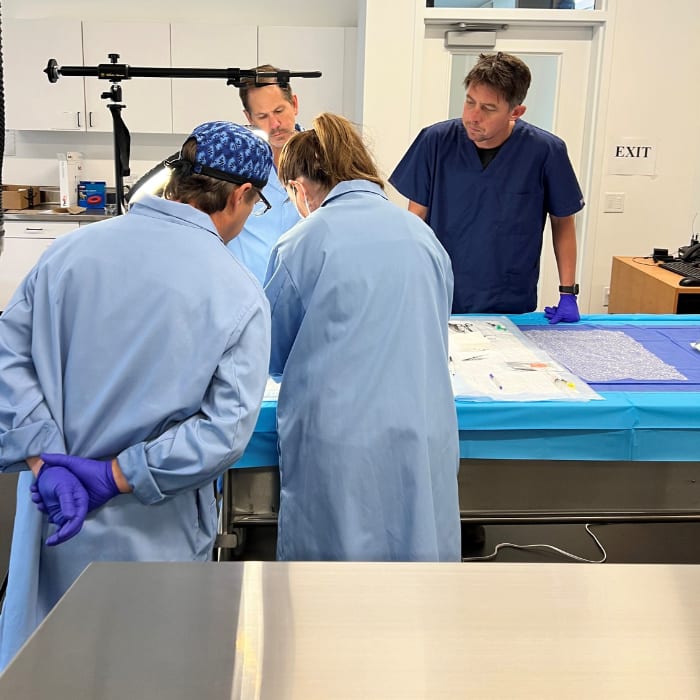The first step is identifying a problem that needs solving in your clinic or OR.
As a physician and surgeon, you are in a unique position to see problems that need solving. Is there something in your clinic or operating room that you think could be better, faster or more reliable? What patient concerns are you able to solve? Also, what issues do your staff face?

Innovative solutions can come from many sources — not just in the clinic or surgery suite. In my case, I was at an ancient Egyptian medicine exhibit and learned that early Egyptians removed excess eyelid skin by compressing the skin between two small twigs, depriving it of blood supply — the excess skin fell off within 5 days. Inspired and impressed by this ancient method of treatment, I set forth to modernize it.
I got a patent on the Ziplyft device, and in 2020, I founded Osheru with my husband, Knute Buehler, MD, to develop the device for minimally invasive lid surgery that would make the surgery easier on the patient and the surgeon. We sketched different designs that we envisioned, and worked with engineers who sent us prototypes. Once we completed FDA registration, we began using the device in patients.
What follows are the steps we took to take our device from idea to use.
1. PATENT YOUR DEVICE
To patent a device, you must first do a patent search to be sure your idea is unique and novel, non-obvious and of use. Then you would hire a patent attorney to assist you with making the claims of your device and submitting the application to the United States Patent and Trademark Office. It can take a year or more to see if it gets approved and can cost a few thousand dollars, but it is a great achievement to have the patent.
2. PUT TOGETHER A TEAM
You may have friends, colleagues or patients who are experts in various areas that could be helpful with your idea. In my case, my husband is an orthopedic surgeon who has done medical device design and consulting. Another friend was a design engineer, and my neighbor was a facial plastic surgeon. In addition, several of my patients had highly successful business careers and are now on our advisory board at Osheru. Surrounding yourself with diverse and talented people can help you refine your ideas and guide you to a marketable product and avoid mistakes.
3. KNOW YOUR WEAKNESSES
As a physician, I did not have the engineering skills to design the device, so I sought out experts. Time is expensive, so surround yourself with trusted resources that can help you problem solve quickly. There are firms out there that can help bring your ideas to reality and that specialize in helping doctors.
4. FUND YOUR PROJECT

There are a variety of options to fund your project. For example, you can apply for government grants, such as SBIR grants. The application process can be time-consuming, but it helps you define your idea and your product. There are even grants to help you hire folks to facilitate your application.
Also, entering competitions like the Winning Pitch Challenge at Eyecelerator provides experience in refining your pitch and introduces you to people in the venture capital community. We are fortunate in ophthalmology to have the program Eyecelerator at AAO and ASCRS to foster innovation in our field. Coming in first place at the Winning Pitch Challenge connected me with many people who have been so generous with their time and expertise to help bring my idea and my company forward (http://tinyurl.com/4c5dzxas).
5. BE PERSISTENT
Finally, being involved in any startup involves rushes of success and the thrill of creating something new, but also involves setbacks. We had problems with early product development going from prototype to manufacturing that cost us time and money. You must be willing to step back, regroup, rally the team to problem solve and move your medical device forward.
CONCLUSION
Identifying unmet needs is the first step in innovation. Once you make the decision to move forward with an idea, patent your device, surround yourself with talented people, and seek out experts who can help guide you to a marketable product. To fund your project, you can apply for grants and enter pitch competitions. Finally, understand that you may experience setbacks. Stay persistent, and you will get to the finish line. OM









